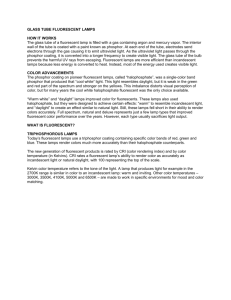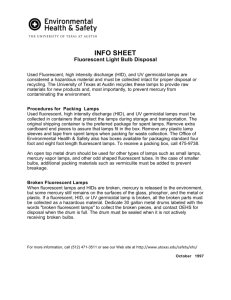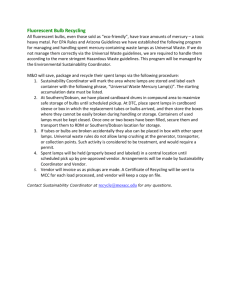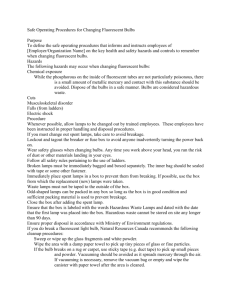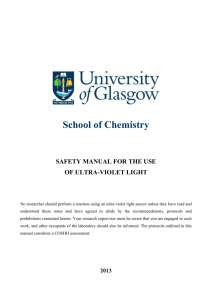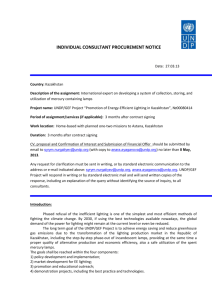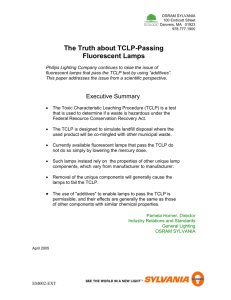Street lighting handout
advertisement
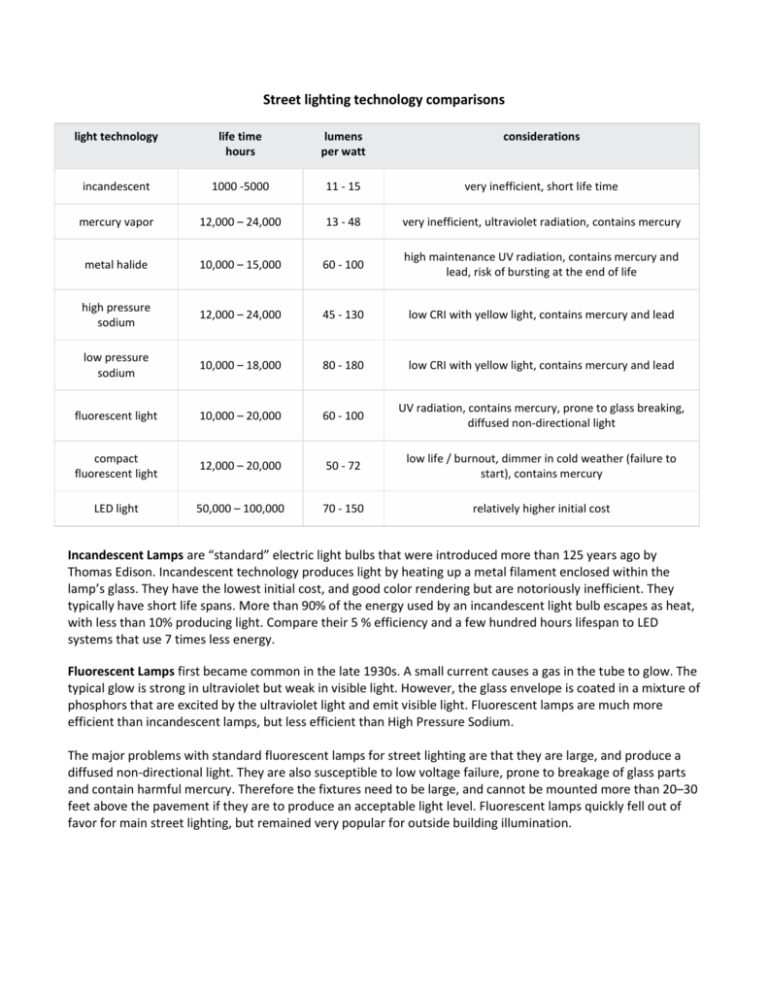
Street lighting technology comparisons light technology life time hours lumens per watt considerations incandescent 1000 -5000 11 - 15 very inefficient, short life time mercury vapor 12,000 – 24,000 13 - 48 very inefficient, ultraviolet radiation, contains mercury metal halide 10,000 – 15,000 60 - 100 high maintenance UV radiation, contains mercury and lead, risk of bursting at the end of life high pressure sodium 12,000 – 24,000 45 - 130 low CRI with yellow light, contains mercury and lead low pressure sodium 10,000 – 18,000 80 - 180 low CRI with yellow light, contains mercury and lead fluorescent light 10,000 – 20,000 60 - 100 UV radiation, contains mercury, prone to glass breaking, diffused non-directional light compact fluorescent light 12,000 – 20,000 50 - 72 low life / burnout, dimmer in cold weather (failure to start), contains mercury LED light 50,000 – 100,000 70 - 150 relatively higher initial cost Incandescent Lamps are “standard” electric light bulbs that were introduced more than 125 years ago by Thomas Edison. Incandescent technology produces light by heating up a metal filament enclosed within the lamp’s glass. They have the lowest initial cost, and good color rendering but are notoriously inefficient. They typically have short life spans. More than 90% of the energy used by an incandescent light bulb escapes as heat, with less than 10% producing light. Compare their 5 % efficiency and a few hundred hours lifespan to LED systems that use 7 times less energy. Fluorescent Lamps first became common in the late 1930s. A small current causes a gas in the tube to glow. The typical glow is strong in ultraviolet but weak in visible light. However, the glass envelope is coated in a mixture of phosphors that are excited by the ultraviolet light and emit visible light. Fluorescent lamps are much more efficient than incandescent lamps, but less efficient than High Pressure Sodium. The major problems with standard fluorescent lamps for street lighting are that they are large, and produce a diffused non-directional light. They are also susceptible to low voltage failure, prone to breakage of glass parts and contain harmful mercury. Therefore the fixtures need to be large, and cannot be mounted more than 20–30 feet above the pavement if they are to produce an acceptable light level. Fluorescent lamps quickly fell out of favor for main street lighting, but remained very popular for outside building illumination. Mercury Vapor Lamps were introduced in 1948. It was deemed a major improvement over the incandescent light bulb, and shone much brighter than incandescent or fluorescent lights. Other disadvantages are that a significant portion of their light output is ultraviolet, and they "depreciate"; that is, they get steadily dimmer and dimmer with age while using the same amount of energy. Mercury lamps developed in the mid 1960s were coated with a special material made of phosphors inside the bulb to help correct the lack of orange/red light from mercury vapor lamps (increasing the color rendering index(CRI)). These go by the "DX" designation on the lamp and have a white appearance to the bulb. As of 2008, the sale of new mercury vapor streetlights and ballasts was banned in the United States by the Energy Policy Act of 2005, although the sale of new bulbs for existing fixtures continues. High Pressure Sodium (HPS) lamps were introduced around 1970 and are one of the more popular street lighting options, the most efficient light source when compared to mercury vapour and metal halide lamps (on a ‘lumen/ watt’ scale). The disadvantage is that they produce narrow spectrum light mostly a sickly yellow in color. These lights do not reproduce colors faithfully. These lights do not find favor with police departments as it is difficult to determine the color of clothes and vehicles of suspects from eye witness accounts in the event of a crime. Another issue of HPS lights is that they contain 1 to 22 mg of mercury for a 100 watt bulb with an average of 16 mg per bulb. They also contain lead. Unsafe disposal of these bulbs can lead to significant exposure of human beings and wild life to mercury contaminated water and food. In recent years, metal halide lamps (MH) have illuminated roadways, parking lots and buildings. Unlike mercury lights, metal halide casts a true white light. It is not nearly as popular as its sodium counterparts, as it is newer and less efficient than sodium. MH lamps operate at high temperatures and pressures, emit UV light and need special fixtures to minimize risk of injury or accidental fire in the event of a so called ‘non passive failure’ – or when the lamp bursts at the end of the useful life. They cannot start up at full brightness as the gases in the lamp take time to heat up. These lamps are thus not suited to situations when intelligent control systems are used to switch lights on and off. The mercury and lead content of these lamps is also a serious issue. A single 1500 watt lamp may contain as much as 1000 mg of mercury. High cost and low life hours has kept them from becoming popular municipal lighting sources even though they have a much improved CRI around 85. Low Pressure Sodium (LPS) lights are even more efficient than HPS, but produce only a single wavelength of yellow light, resulting in a Color Rendering Index of zero, meaning colors cannot be differentiated. LPS lamp tubes are also significantly longer with a less intense light output than HPS tubes, so they are suited for low mounting height applications, such as under bridge decks and inside tunnels, where the limited light control is less of a liability and the glare of an intense HPS lamp could be objectionable. But they present challenges if used in areas where color discrimination is important, such as parking lots and car dealerships. These are popular in areas around observatories, due to their monochromatic nature. Compact fluorescent lamps (CFL) have been used more frequently as time has improved the quality of these lamps. These lamps have been used on municipal walkways and street lighting though they are still rare at this time. Improvements in reliability still need to be made. Some issues with them are limited lumen output, high heat build-up in the ballast, low life/burnout due to frequent cycling (on/off) of the lamp, and the problem where most fluorescent sources become dimmer in cold weather (or fail to start at all). They also contain harmful mercury. CFL efficiency is high and CRI is excellent around 85. LED lamps, or Light Emitting Diodes are rapidly developing in light output, color rendering, efficiency, and reliability. LEDs emit so little heat that they cannot be used in areas where temperatures dip below freezing for some applications, such as traffic signals. Due to numerous advantages, the high initial cost quickly pays for itself due to vastly reduced cost of electricity and maintenance. In Detroit, the LED bonus is that they do not require large amounts of copper wire, so they are not targets for metal thieves.

